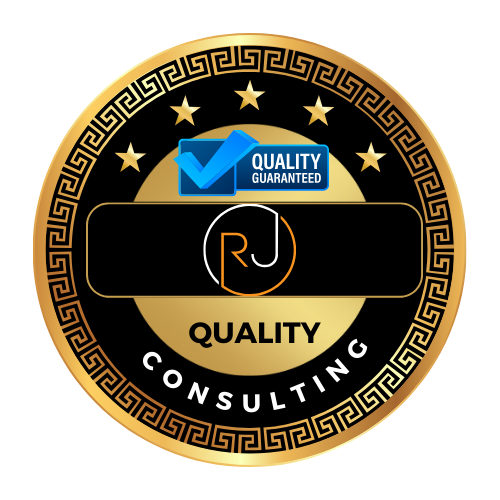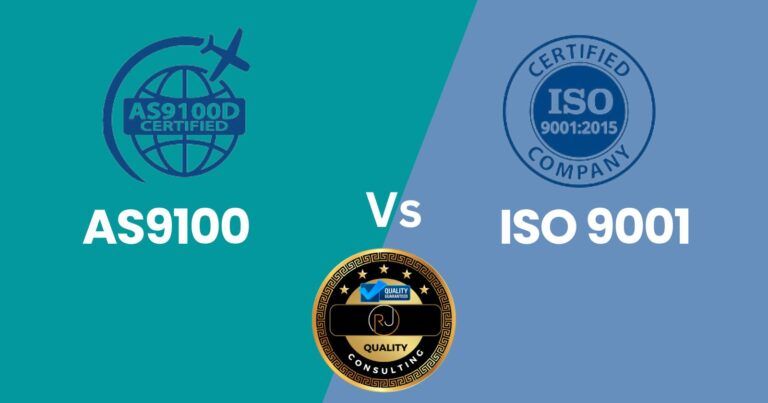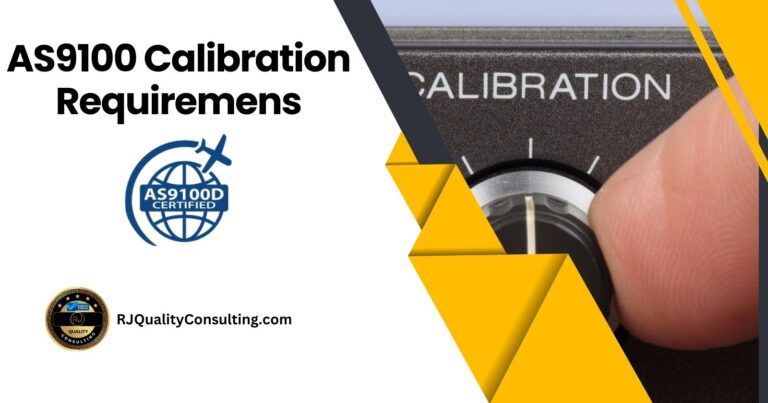AS9100 Certification Requirements
In the aerospace sector, maintaining excellence isn’t just a goal; it’s a critical necessity. This is precisely where AS9100 certification requirements gains its wings, soaring as the benchmark for quality management systems in the industry. It’s not simply another accreditation to pin on the wall of achievements. This standard defines the altitude at which aerospace companies must operate to ensure safety, reliability, and customer satisfaction.
To grasp the impact of AS9100, imagine a world where each component of an aircraft fits perfectly, operates flawlessly, and adheres to the strictest safety measures. That’s what AS9100 aims for. By incorporating this standard, organizations commit to upholding practices that align with the unique operational stresses and regulatory requirements of the aerospace domain.
AS9100 isn’t flying solo; it’s part of a squadron. The standards series – AS9100, AS9110, and AS9120 – cater to different areas within the aerospace sector. AS9100 focuses on manufacturing, AS9110 zeroes in on maintenance, and AS9120 targets distributors. This trifecta ensures that every facet of aerospace operations meets stringent quality standards.
Decoding the AS9100 Certification Requirements: A Blueprint for Aerospace Assurance

I understand AS9100 is more than just another industry certification—it’s your flight plan for safety and quality in the competitive aerospace sector. Here, I’ll illuminate the nuances that set AS9100 apart from ISO 9001 and highlight the unique requirements that ensure your aerospace quality management is second to none.
While ISO 9001 sets the foundation for quality management systems worldwide, AS9100 takes these principles to new heights, specifically addressing the demanding landscape of aerospace manufacturing and service. So, to elaborate on AS9100 Vs ISO 9001, one needs to understand that AS9100 integrates the entire ISO 9001 framework with additional criteria tailored for the aerospace industry. This symbiosis creates a robust protocol that sharpens focus on areas crucial to aerospace, which are not explicitly covered in ISO 9001.
Distinct aspects under AS9100 Certification Requirements
Integration with ISO 9001
- AS9100 incorporates the entire ISO 9001 framework with additional aerospace-specific criteria.
Enhanced Control:
- Design process management,
- Operations oversight,
- Supply chain management.
Stringent Quality and Safety Measures
- Ensuring compliance from concept to delivery.
Risk Management
- Proactive identification and mitigation of risks.
Counterfeit Part Prevention
- Guidelines to detect and prevent counterfeit components.
These points illustrate AS9100’s comprehensive approach to addressing the unique challenges and risks associated with aerospace manufacturing and service.

enhanced control of design, operation, and supply chain processes. These are pivotal in managing the intricate, high-risk aerospace environment. The standard mandates stringent quality and safety measures, insisting on verifiable compliance at every stage, from conception to delivery.
In a sphere where there is little margin for error, risk management takes a front seat. AS9100 emphasizes proactive risk identification and mitigation throughout your operation, ensuring potential issues are intercepted before takeoff. The manufacturing and distribution of counterfeit parts pose a serious threat to the industry. AS9100 provides a solid defense against such infringements, incorporating stringent guidelines to recognize and avert the circulation of counterfeit components.
With these requirements in focus, your path to certification demands a commitment to precision and a deep understanding of the industry’s unique challenges. Stick with me as we idle into the next section, where I’ll guide you step by step through preparing for and achieving AS9100 certification, ensuring a smooth ascent to quality mastery.
The Flight Plan to AS9100 Certification: A Step-by-Step Guide

Attaining AS9100 certification is not an overnight occurrence. It’s a detailed process that requires thorough preparation, commitment, and a clear understanding of the steps involved. Navigating this path is akin to preparing for a complex flight mission, where precise planning and flawless execution are critical for success.
In the context of aerospace quality management, let’s begin with the initial stage of preparation for AS9100 certification.
Pre-flight checks: The importance of gap analysis in preparing for AS9100 certification.
A gap analysis is your initial diagnostic tool. It helps determine where your current Quality Management System (QMS) stands in relation to the AS9100 requirements. It’s about identifying the ‘gaps’ that need closure before you can progress. This analysis paves the way for a targeted action plan, ensuring that every aspect of AS9100’s stringent standards is addressed.
Crafting your aerospace quality management journey with a robust QMS
Implementation of a QMS tailored to the unique demands of the aerospace sector is not just a requirement; it’s a strategic move. The QMS serves as the backbone of your operations, embedding quality into every process, from design to delivery. Developing a QMS that meets AS9100 standards involves defining policies, establishing procedures, and fostering a culture of excellence among your team members.
Taking off with internal audits and management reviews
With your QMS in place, it’s essential to conduct internal audits. These audits offer a mirror to your organization, reflecting the effectiveness of your QMS and revealing areas that need attention. They are an integral part of the quality management journey, ensuring your processes stay aligned with both your business objectives and AS9100 requirements.
Selecting the right co-pilot: Tips for choosing a certification body and navigating the certification audit
Choosing a certification body is akin to choosing a co-pilot; it’s a partnership that significantly influences your success. Opt for a body that not only has the credentials but also understands the aerospace industry’s nuances. The certification audit is your moment to demonstrate that your QMS is not only compliant but also effective. It’s where your preparations face scrutiny, where your commitment to quality shows its true colors.
Transitioning smoothly into the next phase of this journey involves not only securing the certification but also ensuring your QMS continues to evolve and improve. That’s the essence of maintaining and enhancing your AS9100 certification, which will be the focus of the following section.
Elevating Standards: Sustaining and Advancing AS9100 Certification Requirements

Earning the AS9100 certification is an achievement that propels aerospace organizations into a realm of distinguished quality and reliability. But the journey doesn’t end there. Like any high-grade aerospace component, the certification requires regular attention and fine-tuning to ensure peak performance over time.
AS9100 not only introduces a framework for excellence but also necessitates an ongoing commitment to advancement and adaptation. To maintain the certification, companies must embed continuous improvement into their culture, systems, and processes. This includes regular internal audits, management reviews, and addressing non-conformities with a robust corrective action process.
The aim is to foster an environment where improvement is not a one-time event but a continual pursuit. Companies can use quality metrics to monitor their performance and employ improvement strategies such as Lean, Six Sigma, or root cause analysis to drive enhancements.
As part of maintaining AS9100 certification, passing scheduled surveillance audits is a norm. These audits ensure that the Quality Management System remains compliant and effective. Between the standard three-year recertification cycle, organizations face these audits to scrutinize their adherence to AS9100 standards.
Recertification is a critical step that reassures stakeholders of your commitment to quality. While it can seem daunting, seeing it as an opportunity for review and improvement can turn recertification into a powerful tool for driving value and competitiveness in the aerospace market. When it’s time for recertification, ensure your processes are up to date and reflective of the current AS9100 requirements.
The Destination: Reflecting on the AS9100 Journey
Having examined the meticulous journey toward obtaining and maintaining AS9100 certification, I find it evident that this standard stands as a beacon of reliability and excellence in the aerospace sector. By adhering to these rigorous guidelines, organizations affirm their commitment to quality, which in turn cultivates trust among stakeholders and customers.
Earning and reaping the benefits of AS9100 certification is far from the final destination; it is, in essence, a commitment to perpetual progress. Constant attention to quality management practices and a culture that prioritizes continuous improvement ensures that organizations remain at the forefront of aerospace innovation and safety.
As regulations evolve and technology advances, the AS9100 standard will undoubtedly adapt, maintaining its relevance and importance. For companies within the aerospace industry, it serves as a roadmap to not only navigate the complexities of the present but also chart a course for the future.
In closing, AS9100 certification is more than a compliance milestone; it’s an ongoing journey that mirrors the dynamism of the aerospace industry itself. It’s a testament to an organization’s resilience and ability to soar to new heights, grounded in a foundation of unwavering quality and unmatched operational excellence.
🕒 Book Your Free 45-Minute Consultation
Have questions about ISO/IEC 17025 or ISO 9001 implementation or accreditation? Schedule a free 45-minute consultation with me to discuss your Company or laboratory’s needs and how we can achieve compliance together.
Schedule Your Consultation



